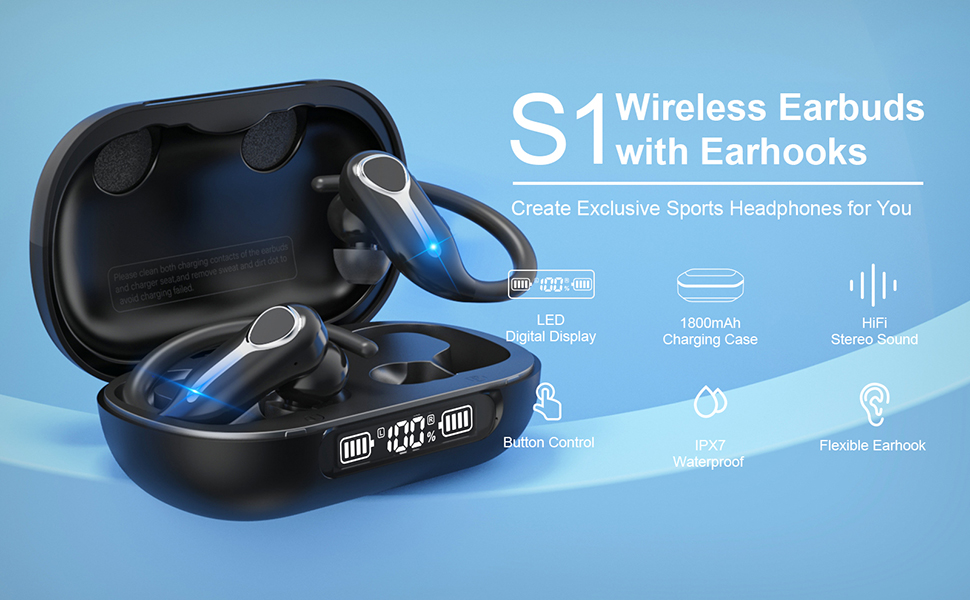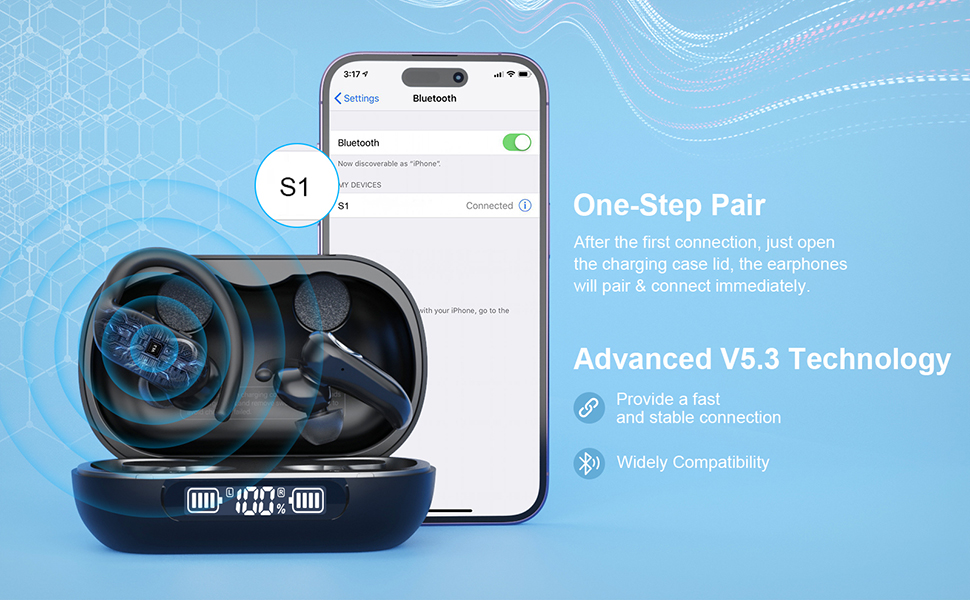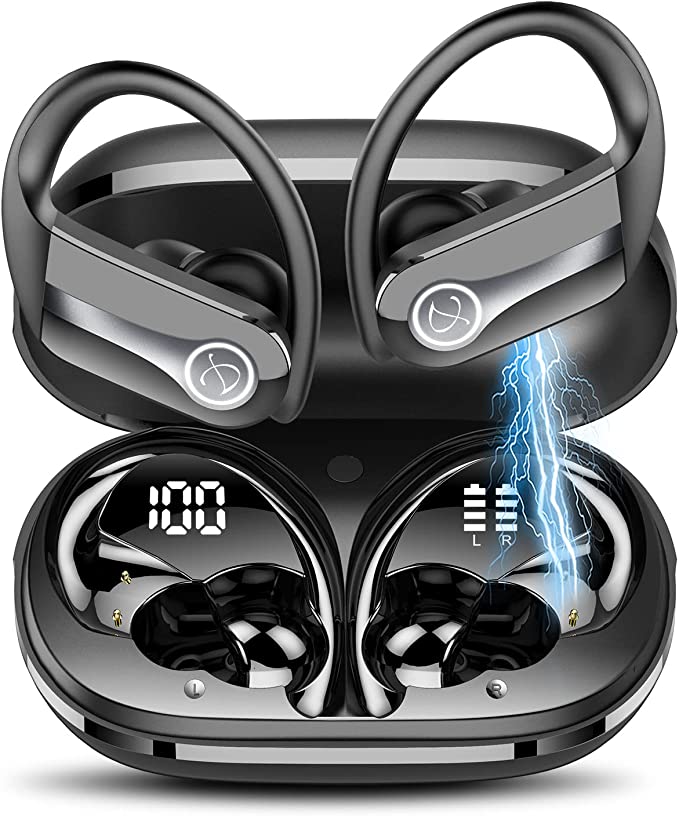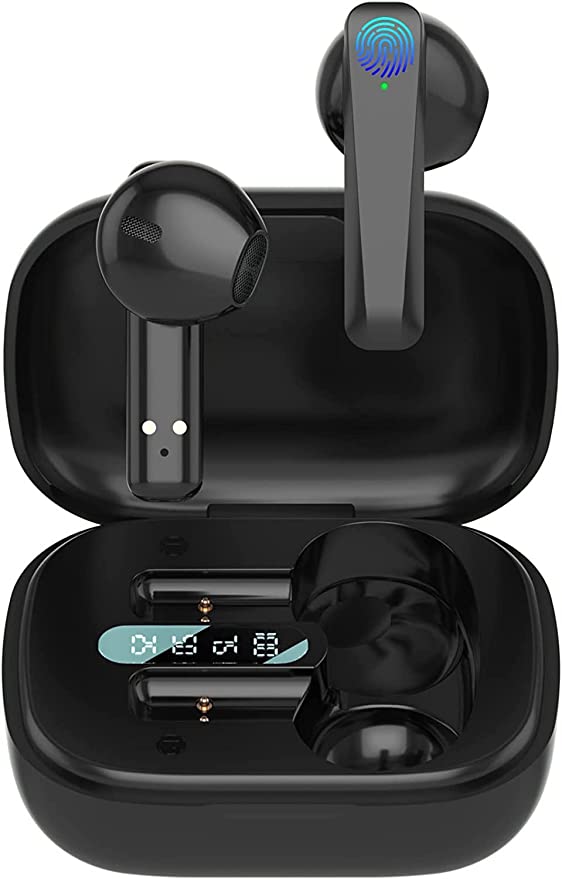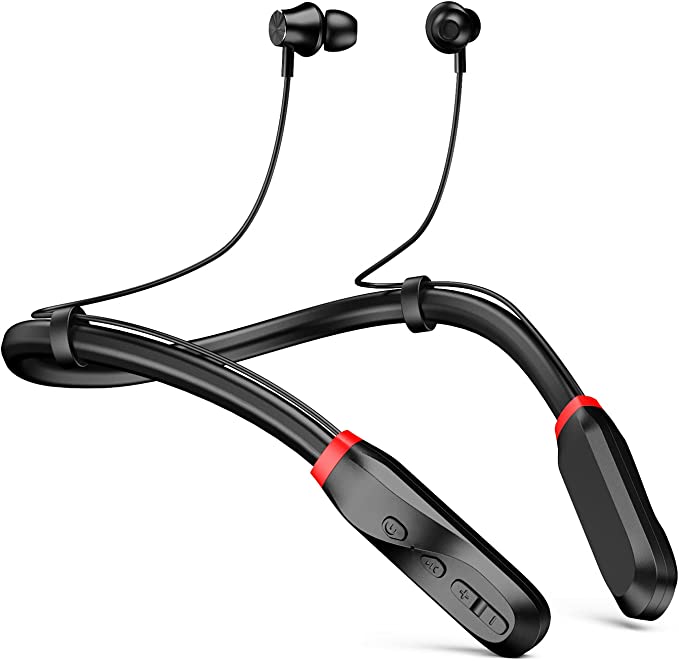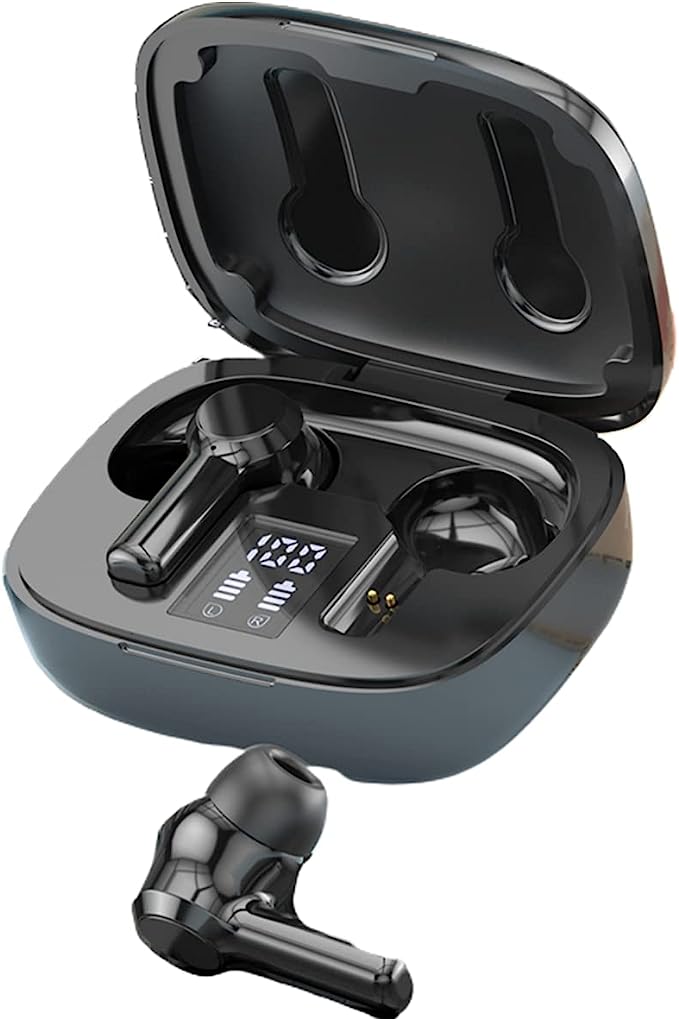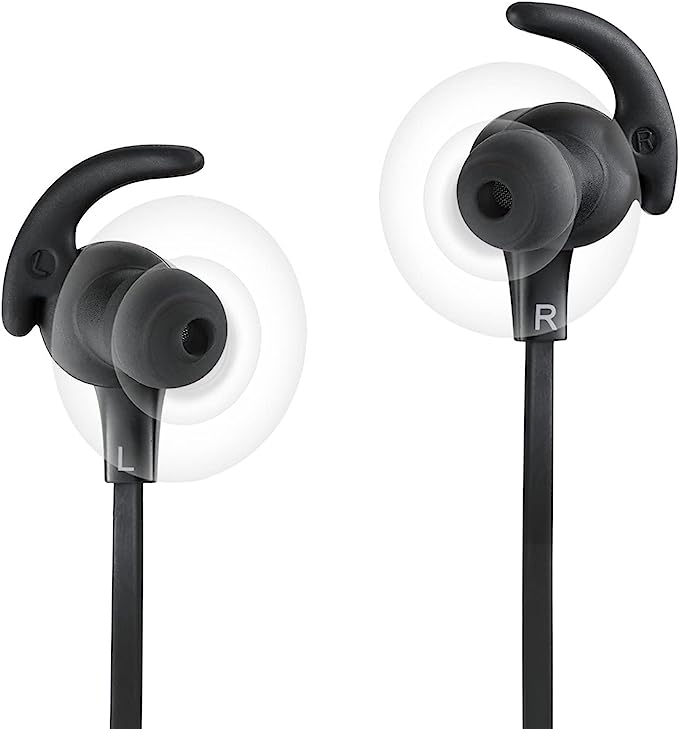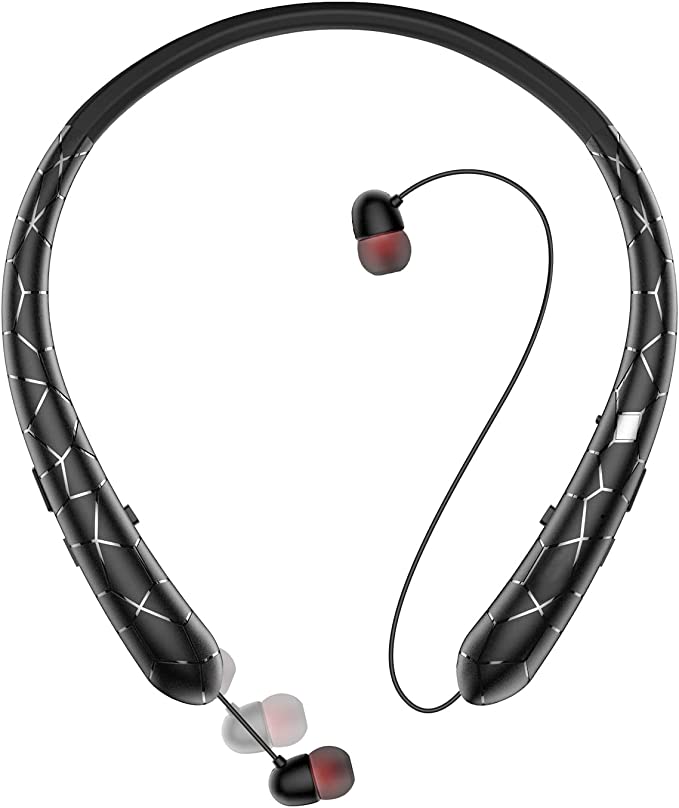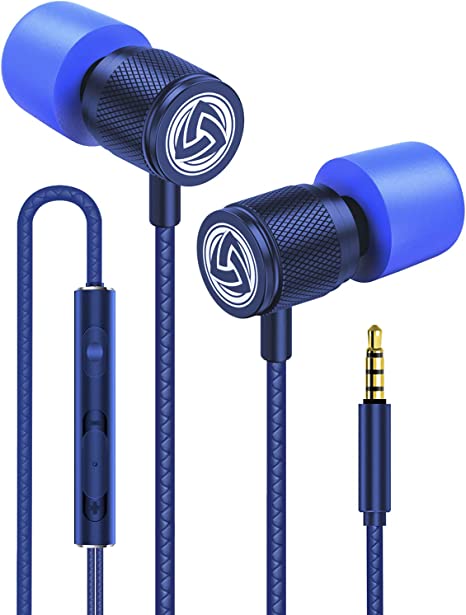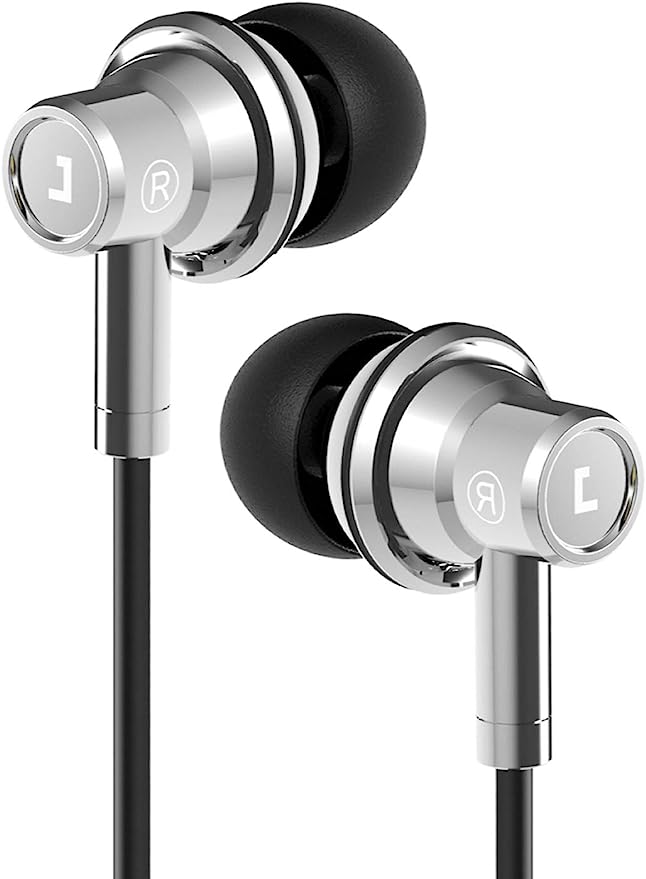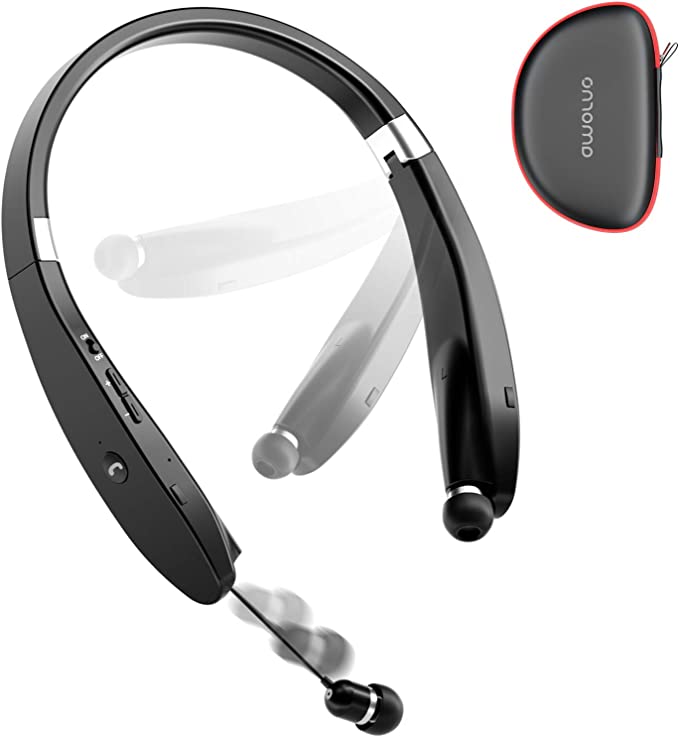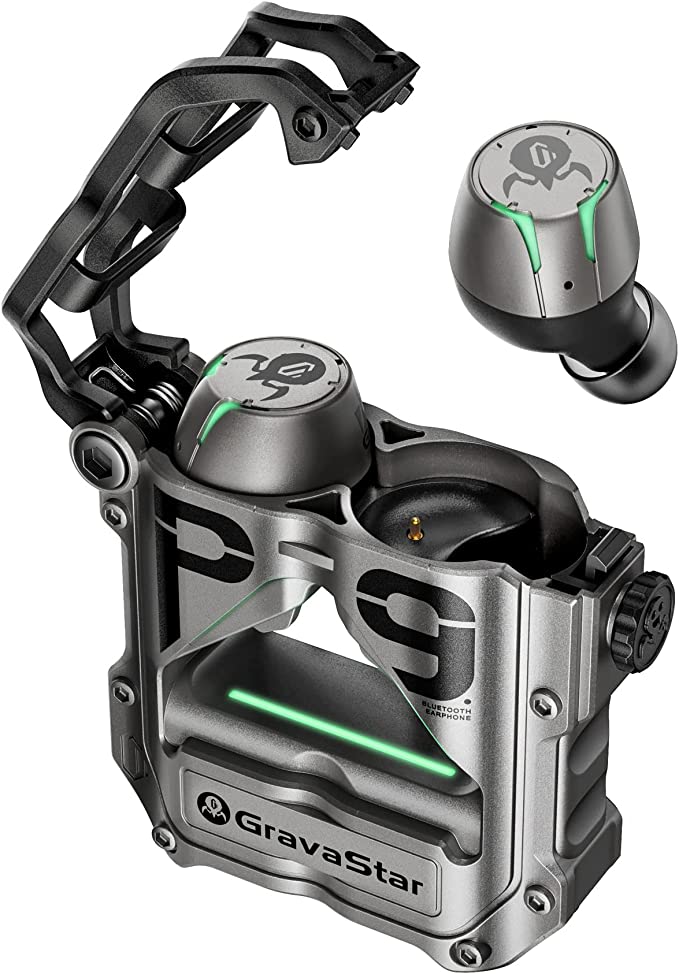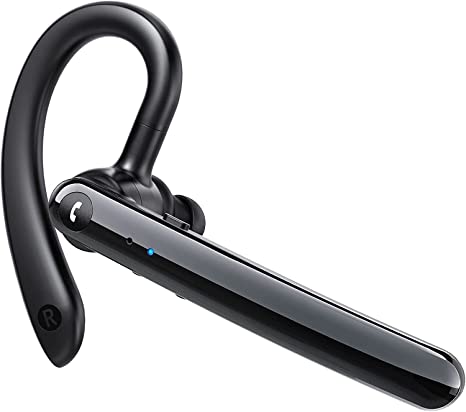STADOR K23 True Wireless Earbuds: Unveiling the Science of Epic Audio Endurance and Clarity
Update on May 30, 2025, 2:36 p.m.
Imagine a world without the soundtrack to your life. Hard to picture, isn’t it? From the pulsing rhythm that fuels your morning run to the calming podcast миллиардера (that lulls you to sleep, personal audio has become an invisible, yet indispensable, thread in the fabric of our daily existence. We’ve journeyed from the frustration of tangled headphone cables, a daily battle of knots and snags, to the sleek, liberating embrace of true wireless technology. This revolution didn’t happen overnight. It’s a tale of relentless innovation, a quest to conquer challenges in battery life, connectivity, and, crucially, sound fidelity. Today, we’ll delve into this world, using the STADOR K23 True Wireless Earbuds not merely as a product, but as a fascinating case study—a lens through which we can explore the science and engineering that bring your audio to life.

The Heartbeat of Sound: Graphene’s Resonant Revolution
At the very core of any listening device lies the diaphragm—the delicate membrane that vibrates to transform electrical signals into the sound waves that grace our ears. For decades, engineers have experimented with various materials, each with its own compromise between lightness, stiffness, and damping. Then came graphene. You might have heard whispers of this “wonder material,” a single layer of carbon atoms arranged in a honeycomb lattice, so thin it’s virtually two-dimensional, yet stronger than steel. Its discovery in 2004 even snagged a Nobel Prize in Physics, and for good reason.
But what does this mean for your ears? Think of a drum skin. To produce a sharp, clear beat, the skin needs to be taut and lightweight, capable of vibrating instantly and stopping just as quickly without unwanted ringing. Traditional diaphragm materials, like paper or plastics such as PET, often struggle to achieve this perfect balance. They might be light but too flexible, leading to distortion at higher volumes, or stiff but too heavy, resulting in a sluggish response that muddies the sound.
Graphene, however, is like the ultimate drum skin material, engineered by nature itself. Its incredible stiffness allows it to move as a single, coherent unit, even when reproducing complex musical passages. This minimizes distortion, ensuring the sound you hear is remarkably true to the original recording. Simultaneously, its almost non-existent mass means it can accelerate and decelerate with breathtaking speed. This translates to an exceptional transient response—the ability to accurately reproduce the sharp attack of a snare drum, the subtle pluck of a guitar string, or the nuanced inflections in a spoken voice. The STADOR K23 specifications highlight its use of a “premium graphene diaphragm,” aiming for “HD, strong stereo sound quality. Sufficient bass and natural mid and high frequencies.” This isn’t just marketing speak; it’s a direct reflection of graphene’s extraordinary physical properties. When you listen through such a diaphragm, you’re not just hearing music; you’re experiencing a more detailed, dynamic, and immersive soundscape, where every note and every whisper is rendered with newfound clarity.

The Art of Clear Conversation: Four Microphones Against the Noise
In our hyper-connected world, a pair of earbuds often doubles as a communication lifeline. Yet, how many times have you found yourself shouting into your microphone on a busy street, or asking “Can you hear me now?” amidst the din of a crowded café? The clarity of our voice in calls is paramount, and this is where sophisticated microphone technology steps in.
The STADOR K23, according to its description, employs a four-microphone system designed for “enhanced call performance,” working to “filter out partial background noise, then accurately pick up your voice and amplify it.” It’s not simply about stuffing more microphones in; it’s about intelligent design. Think of it like having a dedicated team listening in. Some microphones in such an array are typically oriented to focus on capturing your voice with precision. This is often achieved through a technique known as beamforming, where the microphones work in concert to create a directional “beam” pointed towards your mouth, giving your voice priority.
Simultaneously, other microphones in the array are tasked with listening to the surrounding environment, identifying the characteristics of unwanted ambient sounds – the rumble of traffic, the chatter of a crowd, the hum of an air conditioner. Advanced algorithms then process these signals. While the K23’s product information doesn’t specify the exact noise-filtering algorithm (common types include Environmental Noise Cancellation - ENC, or Clear Voice Capture - cVc), the underlying principle is to differentiate your speech from the noise. The system then works to suppress or reduce that identified background noise from the signal that gets transmitted to the person on the other end of your call. The Q\&A for the K23 mentions that “Two of the four microphones are dedicated to filter some most destructive ambient sound while the rest microphones are focused on picking up your voice.” This intelligent division of labor means that even if you’re navigating a less-than-serene environment, your voice has a much better chance of cutting through clearly, making for less frustrating and more productive conversations.
Powering Your World: The Marathon Runner of Earbuds
The Achilles’ heel of many early true wireless earbuds was, undoubtedly, battery life. The dread of a low-battery chirp interrupting your favorite song or a crucial call was all too real. Modern earbuds, however, are built for endurance, and the STADOR K23’s specifications paint a picture of a true marathon runner in this regard.
The product details state an impressive 8 hours of listening time on a single charge for the earbuds themselves. This is substantial, covering a full workday or a long-haul flight segment. But the real magic for extended untethered use lies within the charging case, which boosts the total playback time to a remarkable 100 hours. This incredible longevity is a testament to advancements in lithium-ion (or lithium-polymer) battery technology, which packs more energy into smaller, lighter packages, and efficient power management within the earbuds and the case. Imagine going for days, perhaps even a week or more for moderate users, without needing to hunt for a power outlet for the case itself.
Keeping track of this power reserve is also made user-friendly. The K23’s charging case features an LED power display that shows the remaining charge of the case itself, often as a percentage, and can also indicate the charging status of the earbuds nestled within. This simple visual cue eliminates guesswork and helps you know exactly when it’s time to recharge the mothership.
When that time does come, the K23 offers modern conveniences. It supports wireless charging, meaning you can simply place the case (LED display facing up, as advised) on a compatible wireless charging pad (not included) to top it up. This is the epitome of grab-and-go convenience. For those who prefer a wired connection or don’t have a wireless charger handy, it’s also equipped with a USB Type-C port for charging. USB Type-C is rapidly becoming the universal standard, lauded for its reversible connector (no more fumbling to plug it in correctly) and generally faster power delivery capabilities compared to older USB types. Some product descriptions also hint at the case, with a mentioned 2200mAh capacity, potentially serving as an emergency power bank for other devices, though the 100-hour playback is its primary power feat.

Engineered for Life’s Adventures: Resilience and Comfort
Our audio companions don’t just sit on a desk; they join us on our commutes, our workouts, and our adventures. This demands a certain level of resilience and a design that prioritizes comfort and stability, especially when life gets active.
The STADOR K23 earbuds are described as “sweatproof and IPX5 waterproof.” To understand what this means, we need to decode the “IP Code.” IP stands for Ingress Protection, an international standard (IEC 60529) that classifies how well electrical enclosures resist intrusion from solids (like dust) and liquids. In “IPX5,” the “X” means the device hasn’t been rated for dust ingress (or it’s not a relevant test for this product type). The “5” is the crucial part for liquid protection. It signifies that the earbuds are protected against low-pressure water jets projected by a nozzle (6.3 mm) from any direction.
What does this translate to in real-world terms? It means the K23 earbuds are built to handle the sweat from your most intense workouts. They can shrug off a sudden rain shower during your run or an accidental splash of water. This level of protection gives you the freedom to push your limits without constantly worrying about moisture damage. However, it’s important to note that IPX5 does not mean they are suitable for swimming or being submerged in water. But for most land-based activities and everyday encounters with moisture, it provides a welcome layer of durability.
Beyond just surviving the elements, comfort and stability are key, particularly during movement. The K23 features an “ear hook design.” This ergonomic approach is a well-established solution for active-use earbuds. The flexible hook loops over the top of your ear, providing an additional point of contact and leverage that dramatically reduces the chances of the earbud dislodging during jogging, jumping, or other dynamic exercises. This is complemented by the inclusion of three different sizes of ear tips. Our ear canals are not one-size-fits-all, and finding the right ear tip size is crucial not only for a secure fit but also for optimal sound quality (a good seal enhances bass response) and long-term comfort. The goal of such a design is to make the earbuds feel like a natural extension of you, so you can focus on your activity, not on constantly readjusting them.

Fingertip Symphony: Intuitive Control at Your Command
In the pursuit of a seamless audio experience, how you interact with your earbuds is just as important as how they sound or how long they last. The STADOR K23 opts for “press button control” on each earbud, as stated in its features. This provides a tactile, physical click when you activate a function, which can be particularly advantageous over touch-sensitive controls in certain situations.
Imagine you’re out for a run, hands slightly sweaty, or perhaps wearing gloves in cooler weather. A physical button offers a more decisive and reliable means of control. You can feel the button, press it, and get that reassuring click confirming your command. The product information outlines a comprehensive suite of controls accessible via these buttons: playing or pausing your music, skipping to the next track or going back, adjusting the volume, answering or rejecting calls, and even activating your connected device’s voice assistant (like Siri or Google Assistant). This means your phone can stay safely tucked away in your pocket or armband, while you manage your audio world directly from your ears.
This ease of control is paired with broad compatibility. The K23 earbuds are designed to work with a wide array of “Bluetooth-enabled devices, such as Bluetooth phones, tablets, tv, laptop, pc etc.” Bluetooth, the ubiquitous short-range wireless technology, is the invisible handshake that allows these devices to communicate. While the exact Bluetooth version isn’t specified in the primary “About this item” list, modern Bluetooth ensures relatively stable connections and efficient power usage, contributing to that long playback time and a generally hassle-free pairing process. Once initially paired with your device, true wireless earbuds like these typically reconnect automatically when taken out of their charging case, ready for action.

The Listener’s Perspective: Beyond the Spec Sheet
We’ve dissected the science behind graphene, explored the intelligence of multi-microphone arrays, marveled at marathon battery life, and appreciated the nuances of ergonomic and resilient design. But what does this symphony of technologies truly mean for you, the listener?
It means the potential for your music to sound richer and more detailed, thanks to the graphene diaphragm faithfully reproducing every note. It means the possibility of clearer, less frustrating phone calls, even when life’s inevitable background noise tries to intrude, due to the K23’s four-microphone system. It signifies the freedom from battery anxiety, with a total of 100 hours of playback time meaning you’re almost always ready to listen. It’s the confidence to wear them during a sweaty workout or a light drizzle, knowing the IPX5 rating offers protection. It’s the secure, comfortable fit afforded by the ear hooks and customizable tips, letting you move without a second thought. It’s the convenience of intuitive button controls and versatile charging options, smoothing out the everyday interactions with your audio gear.
While individual experiences will always vary, the positive sentiments often echoed by users of well-designed earbuds—as hinted at by the sample reviews for the K23 mentioning comfort, longevity, and ease of use—stem from this careful orchestration of technology. It’s when these scientifically-backed features coalesce, working in harmony, that a product transcends its spec sheet and becomes a genuinely valued companion in our daily lives. The goal is an experience so seamless and natural that the technology itself fades into the background, leaving you with just pure, unadulterated sound and effortless connection.

The Ever-Evolving Soundscape: A Final Note
The STADOR K23 True Wireless Earbuds, with their blend of material science, acoustic engineering, and power management, offer a compelling snapshot of where personal audio technology stands today. But the world of sound is an ever-evolving soundscape. Graphene, once a laboratory marvel, now finds its way into our ears. Microphone arrays become ever more sophisticated in their quest to isolate our voices. Batteries continue to shrink in size while growing in capacity.
What remains constant is the human desire at the heart of all this innovation: the desire to connect, to be moved by music, to learn, to communicate, and to experience the world through the rich tapestry of sound. The technology, in its finest form, serves as a bridge, making these experiences more accessible, more immersive, and more seamlessly integrated into the rhythm of our lives. So, the next time you pop in your earbuds, take a moment to appreciate the silent symphony of science and engineering working in concert, all to bring you your perfect soundtrack. The invitation is simple: listen, explore, and enjoy the journey.


